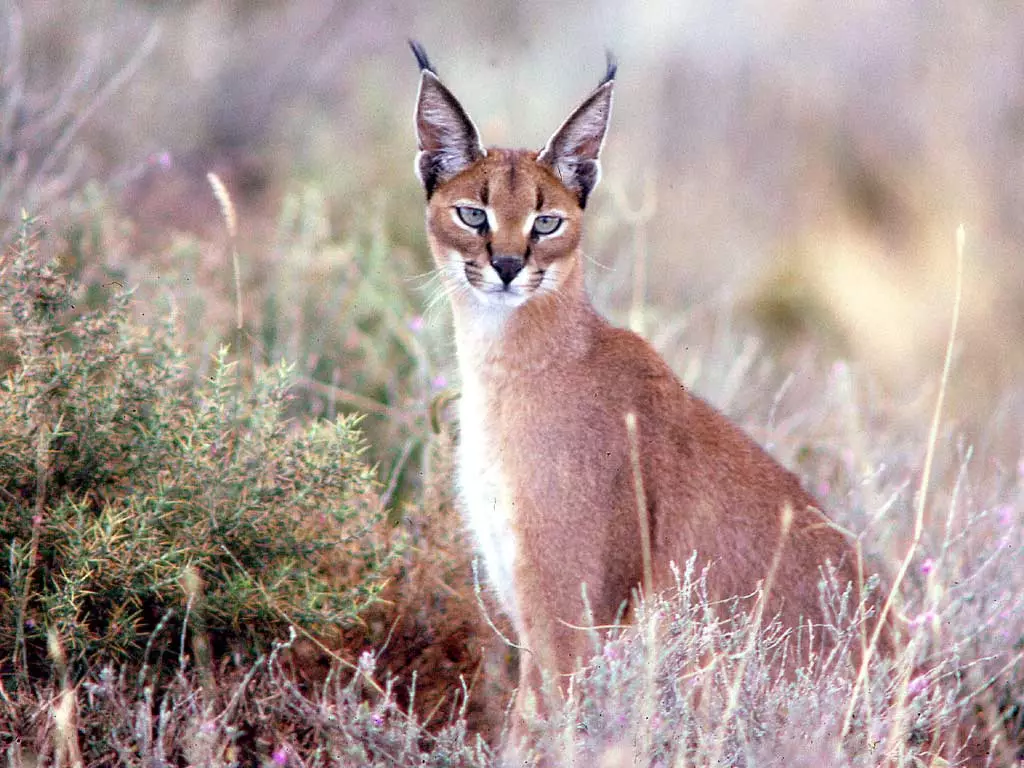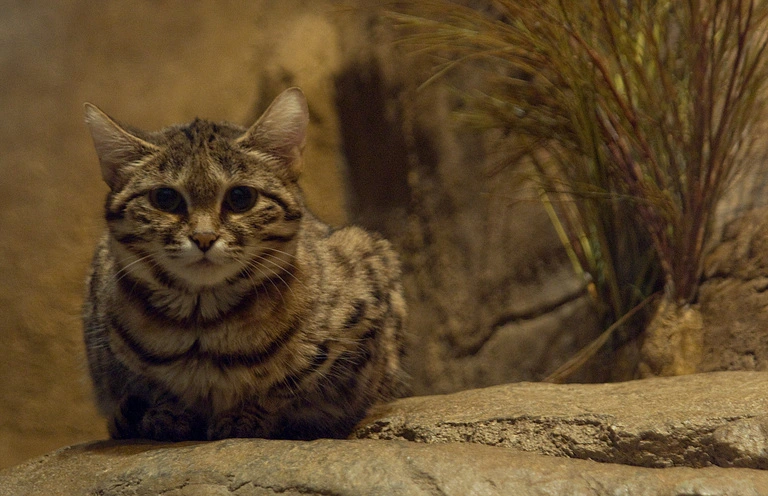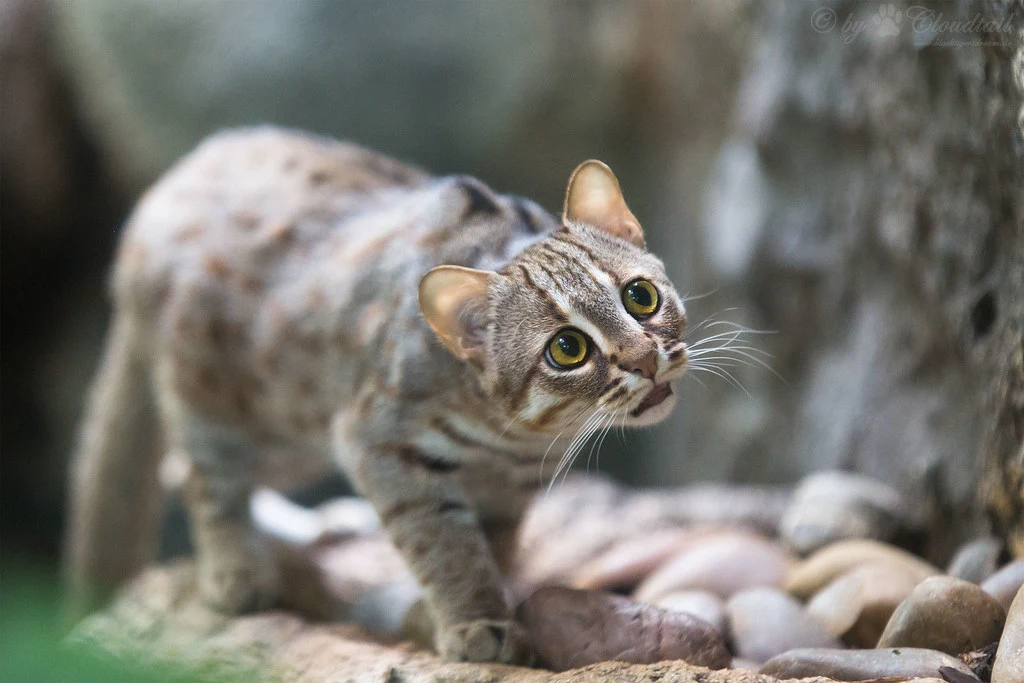Wildlife is part of Africa’s pride and it defines the African beauty and heritage. Lions, cheetahs and leopards are part of the large cat family. They get our effortless attention due to their size and fame in the forest. However, Africa is home to a number of species of small wild cats. These cats are rarely seen, not due to their small size only, but also because most of them are active at night. They have been known to be some of the most beautiful animals to behold in the wild. They are said to be the ancestors of the domestic cats, a reason behind the much resemblance between the wild and domestic cats.

Africa hosts seven species of the small cats.
Some of them are scattered all over the continent’s wild, while others are so endangered and few that their presence escapes the attention of many tourists. The seven species include the African Golden Cat (Caracal aurata), Sand Cat (Felis margarita), African Wildcat (Felis silvestris lybics), Black-Footed Cat (Felis nigripes), Jungle Cat (Felis chaus), Caracal (Caracal caracal) and the Serval (Leptailurus serval). This article delves into more information about the small wild cats in Africa: their current population status, their different sizes, food and distribution.
Are African Small Cats Endangered?
Though some of the African small cats are common in Africa’s forests, others are speedily getting fewer in the wild. For example, the numbers of the African Golden Cat species are decreasing over the years. They are currently categorized as vulnerable, according to the International Society for Endangered Cats (ISEC). However, the populations of a few species such as Sand Cat and Serval are still stable.
Yes. The Black footed cat is endangered and some of the other small wild cat species are classified as critically endangered, endangered or near threatened.

Currently, only 9,707 Black-footed Cats are in existence. Loss of habitat has been the lingering challenge. The cats, especially due to their small size, are also prey to other carnivores. Hyenas, hawks, venomous snakes and owls hunt the wild cats for food. This means that if conservative measures are not taken, Africa’s forgotten felines will be fully buried in endangerment and become only historical. Avoiding the encroachment of human settlements into the wild, avoiding hunting down the cats by humans, considering including more of them into animal sanctuaries and orphanages as well as conserving the environment for the wildlife are some of the pragmatic measures everyone should embrace.
What Do Small Cats Eat In Africa?
Though these are small wild cats roaming across Africa and generally weighing below 2 kilograms, they are dangerous predators. They generally have a kill possibility rate of about 60%. They get their food through hunting, thanks to their camouflaging colors which keep them hidden from most of the predators. At times, they would eat grass in order to remove hair, bones and feathers from their stomachs. It also solves any issues causing constipation to the wild, beautiful, small cats.
African Small Cats are carnivorous, meaning they feed on flesh.
They hunt down frogs, small reptiles, rodents, birds, mice and insects. The flesh provides them with sufficient proteins needed by their bodies to keep them alive in the wild, which is usually a harsh environment for most of the animals. Some of the African small cats are able to run very fast and catch their prey within a short distance. They are also able to jump upwards. For instance, the Caracal can sprint at a maximum speed of 80 km/h and is also able to jump upwards on a distance of about five meters. This makes these cats spare a lot of energy while hunting for prey, enabling them to survive with ease in the wild.
Which African Small Cat Has The Largest Territory?
The different species also have different territory sizes in which they roam across Africa’s continent. While some prefer living near waters, such as the African Golden Cat (Caracal aurata), others prefer the savanna and semi-desert areas of Africa’s wild. Others, like the Sand Cat, are real desert dwellers. This depends on their amount of fur, availability of prey, mating behaviors and their other adaptive measures. Their original distribution and life-span is also a factor which contributes to the differences in their territories.
The Caracal (Caracal caracal), has the largest territory in Africa.
They prefer living in the savanna, the semi-desert areas and the forests. They can be spotted in the southern region of the Sahara, Southern Africa and on the Ethiopian highlands. Algeria, Sudan, Libya, Botswana, Mozambique, South Africa, Kenya and Malawi are some of the areas of Caracal’s distribution. It is also the largest species of all seven other species. In their adult age, caracals weigh between 11 and 18 kilograms, far much heavier and larger than all other species. They are nocturnal, meaning they are usually active at night, thus are hard to spot and photograph.
What Is The Smallest Wild Cat In The World?
The world’s cats vary in size, shape and appearance. While some are small in size, weighing way less than a kilogram for the better part of their lives, others are a bit large, weighing slightly above 2 kilograms. The adult Caracals are far much heavier, though. In Africa, the Black-Footed Cat (Felis nigripes) is the smallest of all. It survives in southern Africa’s semi-arid habitats. It is, however, not the smallest on the planet.
The Rusty-Spotted Cat (Prionailurus rubiginosus) is the tiniest wild cat under the sun.

It weighs between 0.8 and 1.6 kilograms at its mature age. It is only 14 to 19 inches long (35-48 cm), without the tail, which is half its body’s length. Currently, there are about 10,000 Rusty-Spotted Cats in the world’s forests. Its name relates to its appearance, which is punctuated with rusty spots over its gray fur, which covers the better part of the cat’s body. Its habitat is the deciduous forests, the scrub and the grasslands of India and Sri Lanka. It preys on frogs, insects, small reptiles and birds and rodents.
